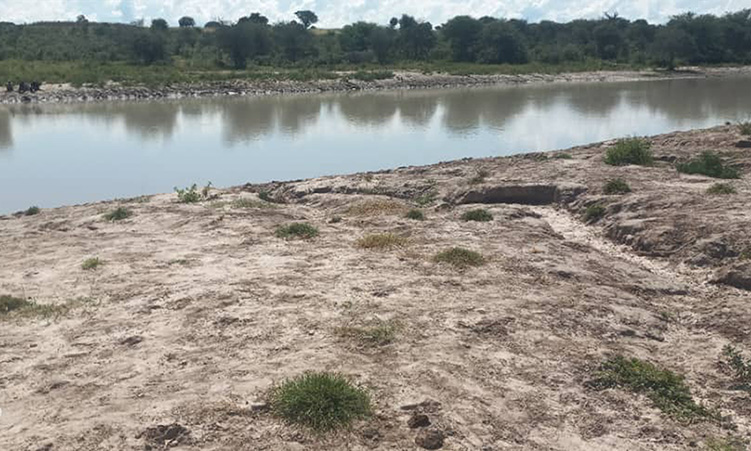AS food prices hit record highs, analysts warn that a re-think of food aid strategies is needed à and Ethiopia, a traditionally food-insecure country, could offer some answers.
Globally, the World Food Programme’s (WFP) operational budget for 2008 has risen to U$3,4 billion – “an increase of $500 million to account for the increased price of food and transport alone,” said WFP spokesman Robin Lodge. “This budget is just to cover our current assessed needs, and leaves nothing for unforeseen emergencies or the huge number of people who are now falling into the hunger trap as a result of the rising prices.”Food prices are expected to continue to rise for the foreseeable future as a result of surging global demand and reduced cereal stocks, partly on account of biofuel.Edward Clay, senior research associate at the Overseas Development Institute, a UK-based think-tank, noted that the situation called for a major re-think of food aid.”Globalisation now means that the poor everywhere are affected.How do we ensure that poor people and indeed poorer countries are not crowded out of world food markets?” Food aid agencies have limited options, but the answer lies perhaps in Ethiopia, said Marc Cohen, research fellow at the US-based International Food Policy Research Institute (IFPRI), and Shukri Ahmed, Senior Economist at the Food and Agriculture Organisation (FAO).”Ethiopia, which now has several million people in need of food assistance, has taken steps to emerge from aid dependency,” Ahmed commented.Among these was attempting to differentiate between people facing chronic food insecurity – currently estimated at more than eight million – and people facing either transitory or acute food insecurity – estimated between one to two million.Such a classification lent itself to providing a better response to food insecurity and targeting increasingly scarce food aid resources more effectively.As part of a federal food security programme Ethiopia’s productive safety net programme provides a combination of cash, farming inputs and food to the vulnerable and chronically food insecure, while the emergency food reserves holds more than 400 000 tonnes of food available for aid agencies to borrow from in case of emergencies.MAJOR DROUGHTS Five major droughts in two decades have left most Ethiopian households reeling, and hundreds of thousands of people still live on the brink of survival.Ethiopia’s safety net programme arose partly out of concern by the government and the donor community that emergency appeals were regularly falling short of their targets, or providing late and erratic support.The safety is a multi-year arrangement that started by assisting five million people in 2005 and intends covering eight million by 2009.It has widely been punted by the relief community as a model for building resilience to face climatic shocks.The emergency food reserve is managed by the government and aid agencies in a transparent manner: aid agencies can borrow from the reserve on condition that they replenish it within a certain time frame.”Until the late 1980s the grain reserves in several countries of sub-Saharan Africa were strictly regulated by government, with a strong bias towards the politically more active urban population,” Ahmed remarked.”Low consumer prices were maintained by a combination of low producer prices and heavy subsidies …Parastatal companies or marketing boards with monopoly rights for the marketing of designated cereals – and, in some instances, the provision of inputs – were established to administer the system.”However, governments could not always provide the parastatals with adequate funds to finance their operations, which often led to reserve stocks being used for normal market operations.”Financial pressures on both governments and the parastatals resulted in insufficient resources being made available to replenish the reserve stocks at the start of the following marketing year,” Ahmed said.”At the same time, the donor community, which was facing increasing demands for food aid, was becoming steadily more disenchanted with the way that reserves stocks were being used, and was increasingly unwilling to provide the resources necessary for rebuilding stocks,” he added.”Progressively, the quantities held in reserves dwindled, eventually ceasing to exist in most countries.Irin News”This budget is just to cover our current assessed needs, and leaves nothing for unforeseen emergencies or the huge number of people who are now falling into the hunger trap as a result of the rising prices.”Food prices are expected to continue to rise for the foreseeable future as a result of surging global demand and reduced cereal stocks, partly on account of biofuel.Edward Clay, senior research associate at the Overseas Development Institute, a UK-based think-tank, noted that the situation called for a major re-think of food aid.”Globalisation now means that the poor everywhere are affected.How do we ensure that poor people and indeed poorer countries are not crowded out of world food markets?” Food aid agencies have limited options, but the answer lies perhaps in Ethiopia, said Marc Cohen, research fellow at the US-based International Food Policy Research Institute (IFPRI), and Shukri Ahmed, Senior Economist at the Food and Agriculture Organisation (FAO).”Ethiopia, which now has several million people in need of food assistance, has taken steps to emerge from aid dependency,” Ahmed commented.Among these was attempting to differentiate between people facing chronic food insecurity – currently estimated at more than eight million – and people facing either transitory or acute food insecurity – estimated between one to two million.Such a classification lent itself to providing a better response to food insecurity and targeting increasingly scarce food aid resources more effectively.As part of a federal food security programme Ethiopia’s productive safety net programme provides a combination of cash, farming inputs and food to the vulnerable and chronically food insecure, while the emergency food reserves holds more than 400 000 tonnes of food available for aid agencies to borrow from in case of emergencies. MAJOR DROUGHTS Five major droughts in two decades have left most Ethiopian households reeling, and hundreds of thousands of people still live on the brink of survival.Ethiopia’s safety net programme arose partly out of concern by the government and the donor community that emergency appeals were regularly falling short of their targets, or providing late and erratic support.The safety is a multi-year arrangement that started by assisting five million people in 2005 and intends covering eight million by 2009.It has widely been punted by the relief community as a model for building resilience to face climatic shocks.The emergency food reserve is managed by the government and aid agencies in a transparent manner: aid agencies can borrow from the reserve on condition that they replenish it within a certain time frame.”Until the late 1980s the grain reserves in several countries of sub-Saharan Africa were strictly regulated by government, with a strong bias towards the politically more active urban population,” Ahmed remarked.”Low consumer prices were maintained by a combination of low producer prices and heavy subsidies …Parastatal companies or marketing boards with monopoly rights for the marketing of designated cereals – and, in some instances, the provision of inputs – were established to administer the system.”However, governments could not always provide the parastatals with adequate funds to finance their operations, which often led to reserve stocks being used for normal market operations.”Financial pressures on both governments and the parastatals resulted in insufficient resources being made available to replenish the reserve stocks at the start of the following marketing year,” Ahmed said.”At the same time, the donor community, which was facing increasing demands for food aid, was becoming steadily more disenchanted with the way that reserves stocks were being used, and was increasingly unwilling to provide the resources necessary for rebuilding stocks,” he added.”Progressively, the quantities held in reserves dwindled, eventually ceasing to exist in most countries.Irin News
Stay informed with The Namibian – your source for credible journalism. Get in-depth reporting and opinions for
only N$85 a month. Invest in journalism, invest in democracy –
Subscribe Now!










